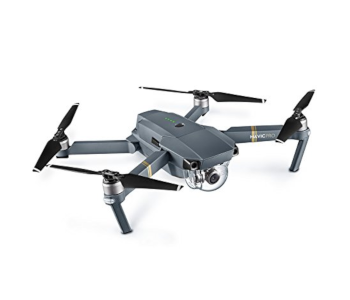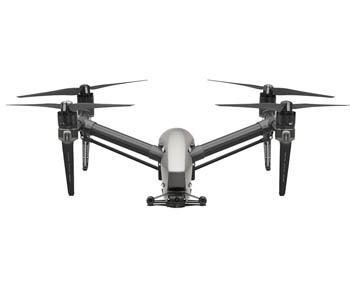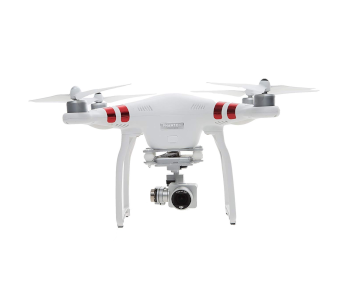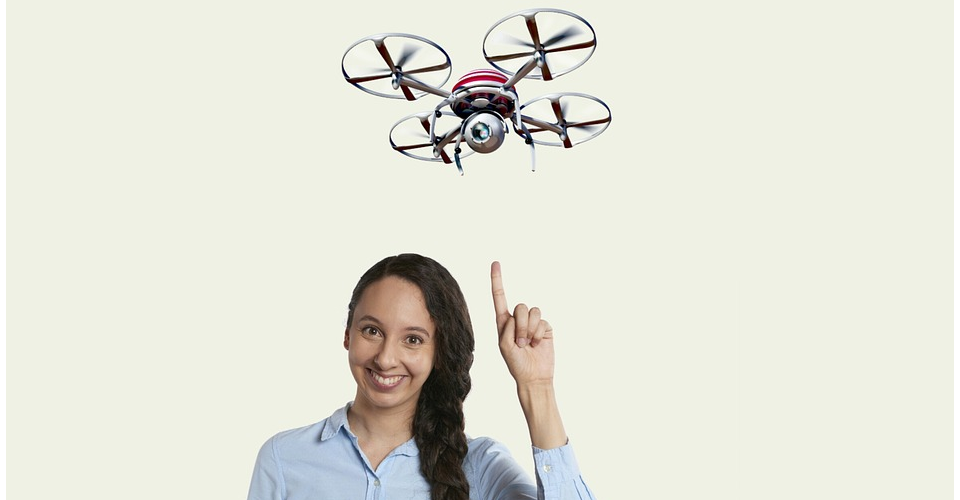How to Keep a Drone Flight Logbook
Licensed pilots – those who fly manned aircraft – probably know all about keeping records of their flights. For these pilots, the hours and distance they have flown, as well as the types of flight they have taken, form the foundation of their careers and prove their expertise.
With drone pilots becoming recognized as legitimate airmen, is there also a benefit for them to keep logs of their drone flights? How can keeping a logbook help Part 107-licensed drone pilots? What should you be writing in a drone flight logbook?
Why keep a logbook?
Keeping a logbook of your drone flights isn’t exactly a lot of work, but all that extra effort is only worth it if it’s good for something. It’s a mundane activity, and not many drone pilots can derive any satisfaction from recording details of their flights. So why bother keeping a logbook anyway?
1. Recommended by the FAA

We’re guessing that the question in most readers’ minds is this: Are Part 107-licensed drone pilots required to keep a drone flight logbook? Simple answer – NO, they are not. No law requires pilots with drone licenses to keep a logbook.
However, is keeping a logbook recommended by the FAA? Very strongly, yes. The FAA has alluded to this in Section 107.7, which states:
“A remote pilot-in-command, owner, or person manipulating the flight controls of a small unmanned aircraft system must, upon request, make available to the administrator… (2) Any other document, record, or report required to be kept under the regulations of this chapter.”
Furthermore, Section 7.3.5, entitled “Benefits of Recordkeeping” of Advisory Circular 107-2 (which was released right after Part 107) states that:
“Recordkeeping of documented maintenance and inspection events reinforces owner/operator responsibilities for airworthiness through systematic condition for safe flight determinations. Maintenance and inspection recordkeeping provide retrievable empirical evidence of vital safety assessment data defining the condition of safety-critical systems and components supporting the decision to launch”.
“Recordkeeping of an sUAS may provide essential safety support for commercial operators that may experience rapidly accumulated flight operational hours/cycles. Methodical maintenance and inspection data collection can prove to be very helpful in the tracking of sUAS component service life, as well as systemic component, equipage, and structural failure events.”
From these excerpts, it is apparent that the FAA puts a lot of stock into using drone flight logs to monitor the status of drone maintenance, any repairs done, or if the drone undergoes routine inspection. Moreover, the FAA may request for a copy of these flight logs upon their discretion.
2. Better maintenance
Should you achieve success as a commercial drone pilot, you might end up doing more and more drone flight jobs. This can mean flying your drone more frequently or flying multiple drones if you are extremely lucky. However, having a schedule this packed means that regular drone maintenance can get pushed to the back-burner. By keeping detailed logs of maintenance and repair activities, you have a way of knowing if those propellers or batteries are due for replacement.
3. Better accident response
If you ever become involved in a major drone-related accident, you might find yourself in the unfortunate position of being under question by the FAA. Take note that, according to Part 107 rules, the FAA has the authority to ask you for a copy of any flight records you are keeping. Put under scrutiny, you will be in a much better position if you can provide any documentation that your drone is well-maintained and that you have logged hundreds of hours of flight experience. After all, nobody expects the FAA to take your word for it.
4. Can help you get good drone jobs

Speaking of taking your word for it, potential customers for your new drone business venture are unlikely to be impressed by your aplomb if you can’t back it up with actual drone flight records. Keep in mind that hundreds of thousands of drone pilots have applied for Part 107 certificates, so the competition between commercial drone pilots is as tough as ever. By having flight records, you can support your claims of having hundreds of hours of drone flight experience under your belt. For highly technical drone jobs, such as mapping or inspection, clients may not even consider a pilot that does not have flight records.
In short, well-maintained drone flight records are great for marketing your services. If you want to stay ahead in a competitive market for commercial drone services, then a drone flight logbook is simply a must.
5. Instrumental in getting a Part 107 waiver
There are certain restrictions under Part 107 for which you can apply for waivers, such as flying at night or flying from a moving vehicle. However, the FAA does not just approve waivers left and right. The approval process takes time, and one of the factors that come into play during the deliberation period is the level of experience of the drone pilot who will be involved. For this reason, the FAA encourages the waiver applicant to provide drone flight logs as proof of their experience and expertise. Having a detailed drone flight logbook is one of the best ways to improve the chances of your waiver application getting approved.
6. Cheaper drone insurance
As with any type of insurance, the premium you need to pay for drone insurance will be based on the assessment of risk factors. Some drone insurance service providers have incorporated a ‘safety factor’ into their assessment process which grants a smaller premium to drone pilots who have exhibited a long history of safe drone flight practices. Obviously, a drone flight logbook that details your flight hours, inspection procedures, and maintenance schedules can greatly contribute towards a good ‘safety score’ and correspondingly lower premium rates.
7. Required for Section 333 exemption and blanket COA holders
Although flight logging is no longer required under Part 107 rules, drone pilots licensed under older standards – such as the Section 333 exemption and the FAA blanket COA – are still legally required to maintain these records.
Electronic vs. pen and paper
Another hotly contested issue is whether it’s better to keep an actual, physical logbook for your drone flight hours or to instead use a more technologically advanced electronic filing system. For us, this dichotomy is simply a matter of personal taste. Each method has its advantages and drawbacks (as we shall see below) and recommendation is for you to stick to what you are comfortable with. What matters is that you pick a method that you can stick to and do regularly – more than anything, consistency is the key here.
If you are still on the fence on what method you should use for keeping your drone flight logs, then here are the merits and demerits of each option:
1. Pen and paper
Keeping pen and paper records is easy, does not require you to learn anything new, and is a method we have relied on for years. For many years, writing down on paper can even be faster than typing on a touch-screen interface. Data theft is not a problem with pen and paper records. Fidelity is even less of a problem, as while electronic data can be changed, written records are more or less permanent.
If you need to show your records to a potential client or authority figures, then it as simple as pulling out a notebook and flipping through the pages. This is so much less cumbersome than extracting data from an app, importing it to a flight log software, retrieving said records, and providing them to the FAA or to the NTSB.
The biggest disadvantage of relying solely on written records is the lack of options to back up the data. It’s easy for a notebook to get lost, or for the ink to blot out when the pages get wet. A poorly maintained logbook also looks terrible – not exactly something you would want to show a potential client.
For some people, carrying a physical logbook around is just too old-fashioned and cumbersome. It’s hard to argue with this opinion, especially when it’s possible to record more data with just your smartphone.
2. Electronic system

For many people, recording flight details using a mobile app is just easier and more natural. After all, flight apps like DJI GO already collect data on your flight activities, and all that’s left to be done is to export this data into a separate flight logging software. The best thing about using an app is that all the flight data can be stored in the cloud, meaning that they can only be deleted when you mean to delete them. Some electronic flight logging apps even offer visualization features, allowing you to present your flight data to customers in a visually appealing manner.
One feature of electronic data logging that cannot be simulated by pen and paper recording is the richness of the data that can be collected. With electronic data logging, finer details such as battery levels, sensor status, and route mapping can be recorded. If you become involved in an accident, data analysis at this level can be very helpful in troubleshooting.
The biggest concern of many drone pilots using flight logging software is on data privacy and unauthorized data sharing. After all, we live in a world where data is currency. Your flight logs reveal a lot about you – the type of drone you fly, your location, and how many hours you’ve spent flying a drone. Of course, all these flight logging software has privacy policies that prevent them from sharing your personal information, but a little apprehension never hurt anyone.
As with any piece of technology that relies on cloud storage and processes, the downfall of a flight logging software lies in the fact that it relies on an internet connection. This might be a luxury that you will not get to enjoy in every place where you decide to fly your drone. At best, the app might be capable of saving to a local file and syncing to the cloud later on.
What to write in your drone flight logs
Getting started on your first drone flight logbook seems like an overwhelming task, but most flight logging software and ready-made drone flight logbooks will guide you on what you need to write down. These are the usual notes we make on our drone flight logs.
1. Date, time, hours of each flight
The backbone of any drone flight log, you need to indicate when you flew and the specific times of takeoff and landing. These pieces of information are very instrumental in defining the number of hours of drone flight you have logged. In many cases, just having lots of hours of experience is enough to get you the job or to get your waiver approved.
2. Mission details
Under mission details, we like to define the purpose of the flight and the type of drone used. It’s usually worthwhile to differentiate between flights done recreationally and commercially, if only for the fact that there are different sets of restrictions for flying in either circumstance. By identifying the type of drone used, you can also keep track of how many hours you’ve spent a particular drone model. This can be quite useful if a commercial drone job comes up that requires experience with a high-end drone model, such as the DJI Phantom Pro 4 or Inspire 2.
3. Location of operation
Again, recording where you flew your drone is just one of the essential pieces of information for your flight log. This can be especially important for commercial drone pilots who are in under closer scrutiny when it comes to flying in controlled airspace. By maintaining a record of your flight location, you can prove that you were not flying in restricted airspace, or that you had secured prior ATC permission when needed. Under location, it is also a good practice to indicate the maximum altitude that your drone had achieved during this mission.
4. Conditions of flight
Under conditions of flight, we typically indicate if flight commenced at night, in windy conditions, or if the surrounding area had any obstacles or water hazards. None of these are ideal conditions, but it would be good to lack back on these factors if something goes wrong with the flight. Stating whether you flew at night is also important in racking up hours of drone flight at nighttime, which may be instrumental in applying for a night flight waiver.
5. Maintenance and inspection notes
Lastly, it is a very good practice to include a pre-flight inspection checklist in your records and to take note of any maintenance work that you (or others) have done. By keeping evidence that you maintain and inspect your drone regularly, you can show potential clients that you are a reliable drone pilot who can keep their drone in tip-top condition all the time. Taking note of when you replaced parts, such as propellers and batteries, makes it easy to determine when the next round of parts replacement is due.
Final thoughts
The practice of keeping a flight logbook is a habit that drone pilots have picked up from licensed airmen. It is a very good habit if we have to say so ourselves, even for recreational drone pilots. Aside from all the merits we have listed above (and the fact that the FAA themselves want you to do it), having a detailed record of all your flight missions is also fun. It’s pretty great being able to look back on the flight missions you have finished, learning from your mistakes, and realizing that you have become a much better drone pilot than you were before.
For commercial drone pilots, keeping detailed drone flight records is several times more valuable. It’s basically a record of your experience and reliability – both very important characteristics for you to market your drone services. Having documented experience also expands the services that you can offer by way of the waiver applications that will be accessible to you.


